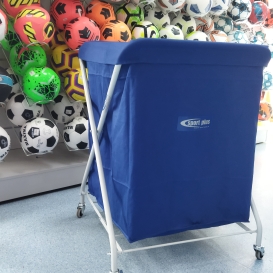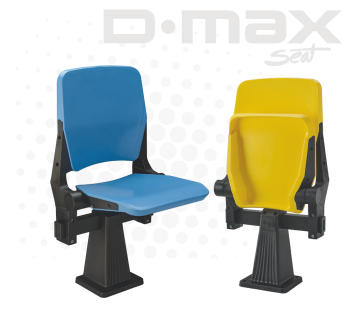Nets for hoops
The range of basketball hoop nets includes a wide selection of products designed both for boards mounted in sports facilities and those placed on outdoor courts. Nets intended for indoor use are mainly made of polypropylene. In the case of outdoor playing fields, galvanized chain nets are the ideal solution, which are characterized by resistance to weather conditions and long life.Small detail, big impact on the game
More useful information can be found at the bottom of the page.-
Hoop net - 10 ears, string thickness 2 mm
17.50 PLN Tax inc.14.23 PLN NetCatalog no: 1-10000
Availability: Delivery within 24-48 hours -
Hoop net - 12 ears, string thickness 2.5 mm
24.50 PLN Tax inc.19.92 PLN NetCatalog no: 1-10002
Availability: Delivery within 24-48 hours -
Hoop net - 8 ears, string thickness 2.5 mm
17.50 PLN Tax inc.14.23 PLN NetCatalog no: 1-10005
Availability: Delivery within 24-48 hours -
Hoop net - 12 ears, string thickness 3 mm
30.00 PLN Tax inc.24.39 PLN NetCatalog no: 1-10003
Availability: Delivery within 24-48 hours -
Hoop net - 12 ears, string thickness 5 mm
39.00 PLN Tax inc.31.71 PLN NetCatalog no: 1-10004
Availability: Made to order -
Chain hoop net (12-clamp)
98.40 PLN Tax inc.80.00 PLN NetCatalog no: 1.02.1
Availability: Delivery within 24-48 hours -
Anti-Whip hoop net - 12 ears, string thickness 6 mm
60.00 PLN Tax inc.48.78 PLN NetCatalog no: 1-10001
Availability: Delivery within 24-48 hours
Helpful information about hoop nets in a nutshell
1 Types of nets and their applications
- Basketball hoop nets are divided into two main categories: polypropylene n ets and galvanized chain nets, which differ not only in the material of manufacture, but also in their purpose, strength and resistance to external conditions.Polypropylene nets
- This is the most commonly used solution in indoor sports facilities, such as sports halls, gymnasiums and training centers. Their soft texture makes them quiet during use, which is an important advantage in enclosed spaces. Depending on the user's needs, they are available in different string thicknesses, which affects durability and the way the ball behaves when passing through the hoop.
- Thanks to the different attachment options (8, 10 or 12 ears), these nets can be easily adapted to different types of hoops, ensuring a stable attachment and the confidence that the net will work without fail even with frequent use. It is also worth noting that polypropylene is a material resistant to mechanical damage, which means that even after prolonged use it does not lose its functional properties. Moreover, modern nets, such as the Anti-Whip model, have special technologies to prevent excessive bending and tangling of the net after an accurate throw, which significantly improves the comfort of the game.
Galvanized chain nets
- This is a solution dedicated to outdoor playing fields, where resistance to harsh weather conditions plays a key role. The steel elements of the net are protected by a zinc coating, which protects against corrosion and the negative effects of prolonged exposure to sun, rain, snow and moisture. This process makes the nets not only very durable, but also flexible, which is important for public and school outdoor playing fields, where the durability of sports infrastructure matters,
- Unlike polypropylene nets, chain nets are made of metal mesh, which gives them greater rigidity and resistance to accidental damage. They are slightly heavier, which means that a ball passing through the hoop does not affect their position as easily as with lighter plastic nets. For this reason, chain nets are often chosen for city sports fields, where games are played almost daily and the equipment is exposed to heavy use.
- These nets are usually equipped with 12 clamps, which provide a secure attachment to the rim and prevent shifting even after repeated ball strikes. Thanks to their design, chain nets require virtually no maintenance, and their durability means they can last for years without needing replacement.
Use of nets in different environments
- Choosing the right type of net depends primarily on where it is used. Polypropylene nets are ideal for indoor use, where aesthetics, comfort and quiet operation are important. On the other hand, galvanized chain nets are the best choice for outdoor playgrounds, where durability and resistance to weather conditions are a priority.
- We offer a wide range of both types of nets, allowing you to customize products to meet the specific needs of users - from professional players to amateurs, both on outdoor pitches and in sports halls.
2 Thickness and material of construction
- Choosing the right material and string thickness of a basketball hoop net is crucial to ensure durability, functionality and playing comfort. These nets can be made of various materials, such as polypropylene, polyester and galvanized steel.Polypropylene nets
- Polypropylene is a synthetic material that is one of the most commonly chosen raw materials for the production of basketball nets intended for use outside sports facilities. It is characterized by high mechanical strength and resistance to stretching and abrasion. Thanks to its elasticity, polypropylene nets cope well with intensive use, while maintaining their shape and functionality. The material is resistant to moisture, which ensures its durability, even in conditions where there are changes in temperature or humidity in sports halls.
- The thickness of the string in polypropylene nets usually varies between 2 mm and 5 mm. Nets with a thin string (about 2 mm) are lightweight, less visible and more flexible, making it easy for the ball to pass through them, and the nets themselves blend in perfectly with the aesthetics of sports facilities. Nets with thicker strings (3 mm, 4 mm and 5 mm) are characterized by greater resistance to mechanical stress, which is crucial for intense games and frequent ball strikes.
Polyester nets
- Polyester is another material used in the production of basketball nets, known for its strength, tensile strength and high weather resistance. Polyester nets are a popular choice for professional games because they maintain rigidity and shape. In addition, nets made of polyester, such as Anti-Whip models, have special properties that prevent the net from tangling after each accurate throw, improving playing conditions. Polyester is a highly UV-resistant material, making it suitable for both indoor and outdoor use.
- For polyester nets, the thickness of the string can range from 4 mm to 6 mm, making them more rigid and resistant to deformation. These types of nets are often used in professional games, where it is crucial to maintain the perfect shape of the net after each hit, without it bending or deforming excessively.
Galvanized chain nets
- They are made of galvanized steel and are mainly intended for outdoor use. The process of galvanizing involves coating the steel components with a thin layer of zinc, which protects the mesh from corrosion and increases its resistance to atmospheric agents such as rain snow or UV radiation. Such nets are more massive and heavier than those made of synthetic materials, which makes them hold their position better and do not easily deform under the influence of wind or accidental ball strikes.
- The thickness of the wire in chain nets is usually from 3 mm to 5 mm, which provides them with sufficient strength to withstand intensive use. These nets are practically indestructible in typical outdoor use, and their heavier weight makes them better suited for public, school or commercial fields, where the longevity of sports equipment matters most.
Effect of thickness and material on playing comfort
- The thickness and material of the net have a key impact on comfort during play. Nets of lesser thickness (2 mm - 3 mm) are preferred in sports halls, where lightness and smooth flow of the ball through the basket are important. These types of nets are often used for amateur and intermediate games, as they offer adequate strength while maintaining flexibility.
- On the other hand, thicker nets (4 mm - 6 mm) offer greater durability and are used in areas with high levels of play, such as professional sports facilities. Thicker nets are better able to withstand frequent impacts, and their rigidity means that they retain their original shape longer, which contributes to the aesthetics and professional nature of the game.
3 Attachment systems
Ear attachment (loops)- The most common mounting system for polypropylene and polyester nets in sports facilities is the mounting on the so-called ears (loops). This is a standard solution, which allows easy and fast installation of the net on the hoop. Nets mounted on ears are available in variants with 8, 10 and 12 loops, which has an impact on the stability of attachment and strength of the net.
- Nets with 8 ears are lighter, more flexible designs that are ideal for sports halls and gymnasiums where the intensity of play is moderate. This type of attachment is easy to fix on most standard hoops.
- Nets with 10 ears are an intermediate option that offers slightly more stability compared to nets with 8 ears. Thanks to the additional loops, the net adheres better to the rim, which minimizes its movement during intense games.
- Nets with 12 ears are the most stable solution, used mainly in professional sports facilities and outdoor courts. The higher number of attachment points allows for an even distribution of loads, which prevents the net from accidentally detaching or overstretching in one place.
Hookless net attachment system (using a rod)
- This is a modern solution used mainly in professional basketball hoops. In this system, the net is attached by a special rod inserted into tubes fused to the hoop. This system is extremely safe, as it eliminates the risk of hands catching on protruding hooks or net fasteners, which could lead to injury during play.
- Nets with a hookless fastening system are mainly used in professional sports halls, where safety and durability requirements are at the highest level. This mechanism provides a stable and durable attachment, and allows the net to be quickly attached and removed without the need for additional tools. In addition, the system prevents the net from tangling, which can affect the comfort of the game and the aesthetics of the basket.
Clamp attachment system
- In the case of chain nets, clamps are the most commonly used solution. Chain nets are equipped with 12 clamps, which allow the net to be firmly and permanently attached to the rim. The clamps are made of durable, corrosion-resistant materials, which is important for outdoor playing fields.
- The clamps prevent the net from sliding on the rim and ensure that the net will not be damaged or detached even after repeated ball strikes.
Differences between fixings in nets for indoor and outdoor use
- For sports halls and indoor venues, ear fastening systems (8, 10, 12 loops) or hookless rod fastening systems will work best. Such solutions ensure quick installation, as well as the ability to easily replace the net without the need for specialized tools.
- On outdoor playing fields, where nets are exposed to changing weather conditions, zinc nets with a clamp fastening system are preferred. This is an extremely durable solution that minimizes the risk of mechanical damage and does not require frequent inspection or maintenance.
We encourage you to browse our range of hoop nets or contact us so that we can choose the most suitable and adequate equipment to suit your needs.













